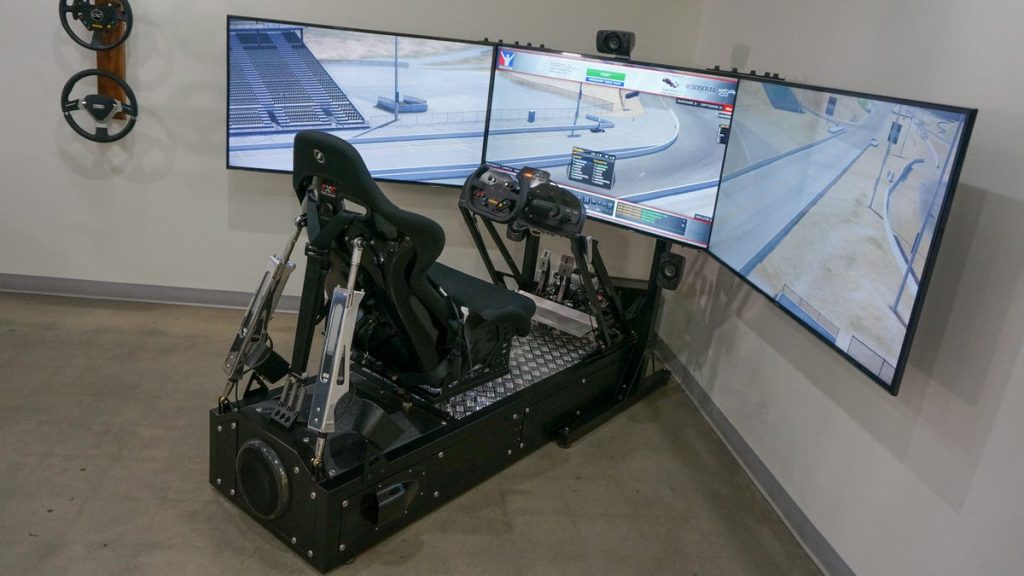The thrill of high-speed racing, once exclusive to professional drivers or those with access to a track, is now readily available through the immersive world of sim racing. While a basic wheel and pedal setup can provide a taste of this excitement, a dedicated sim racing cockpit elevates the experience significantly, replicating the atmosphere and sensations of a real racing environment. This investment transforms virtual racing from a casual pastime into a truly engaging activity, blurring the lines between the digital and physical worlds.
A sim racing cockpit provides more than just aesthetic appeal; it offers a stable and ergonomic platform crucial for both performance and enjoyment. The rigid structure firmly anchors powerful direct-drive force feedback wheels and withstands the intense pressure applied to pedals during rigorous racing. This stability prevents unwanted movement or slippage, allowing racers to fully experience the subtle nuances of force feedback and maintain precise control over their virtual vehicle. Moreover, an adjustable cockpit ensures optimal positioning of the wheel, pedals, and seat, enhancing comfort and minimizing fatigue during extended racing sessions. This personalized setup promotes a natural driving posture, improving control and maximizing power transfer through the pedals.
For those seeking the ultimate immersion, motion control rigs add another layer of realism. These systems incorporate actuators that translate in-game forces into physical movements of the racing seat, mimicking the G-forces experienced during acceleration, braking, and cornering. This dynamic feedback significantly enhances the sense of speed and immersion, allowing drivers to feel the car’s weight transfer and reactions to their inputs, ultimately improving their performance and connection to the virtual world. While adding considerable cost, motion control transforms sim racing from a game into a highly realistic simulation of driving.
Navigating the market for sim racing cockpits can be daunting, with options ranging from basic wheel stands to elaborate motion-controlled rigs. Several factors influence the ideal choice, including budget, available space, and the intensity of sim racing pursuits. Entry-level options like the Next Level Racing Wheel Stand provide a solid foundation for mounting a wheel and pedals, while foldable cockpits like the Playseat Challenge offer portability and space-saving convenience for smaller living areas. For those seeking a more dedicated setup, the OpenWheeler GEN3 provides a robust frame and comfortable seat without the premium price of a full cockpit. At the higher end, the Next Level Racing GTtrack offers a solid, upgradable platform capable of supporting powerful direct-drive wheels and motion control systems, providing a premium racing experience.
For enthusiasts seeking hyper-realism and willing to invest significantly, high-end options like the CXC Motion Pro II offer unparalleled immersion. These turn-key systems include motion platforms, immersive audio, high-end displays, and direct-drive steering wheels, creating a near-identical replica of a real race car environment. While these premium rigs carry a hefty price tag, they represent the pinnacle of sim racing technology, blurring the lines between virtual and real-world racing.
Ultimately, the choice of a sim racing cockpit hinges on individual needs and preferences. Casual racers may find a basic wheel stand sufficient, while dedicated sim racers will benefit from the stability and ergonomics of a full cockpit. Those seeking the ultimate immersion will gravitate towards motion control rigs, even with their increased cost. Careful consideration of these factors, alongside research into specific models and features, will ensure the selection of a sim racing cockpit that elevates the virtual racing experience to a new level of realism and enjoyment. From budget-friendly options to high-end setups, the world of sim racing offers a variety of choices to cater to every racer’s aspirations and budget.

